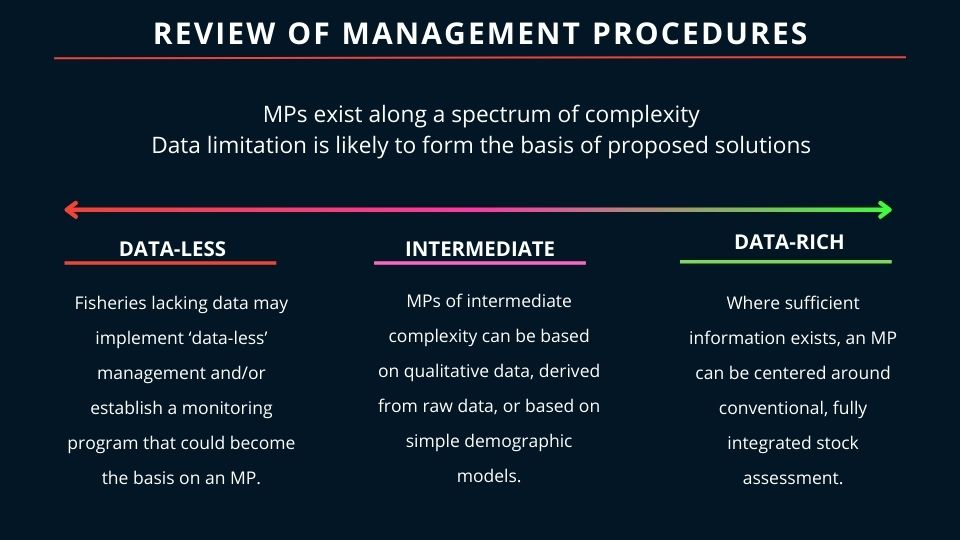What Are Multi-Indicator Management Procedures?

Challenges in Data-Limited Fishery Management
Multi-indicator frameworks tackle several key challenges in fisheries management:
- Data Limitations: These frameworks make use of diverse indicators to provide a broader perspective than single-indicator frameworks.
- Tackling Uncertainty: Multi-indicator frameworks can be used to construct MPs that are robust to uncertainties related to environmental changes and data imprecision.
- Stakeholder Engagement: The design process promotes transparency in decision-making, aligning management strategies with stakeholder priorities and fostering collaboration. Multi-indicator frameworks can be designed to complement local and customary practices and incorporate indicators based on local expert knowledge.
- Adaptive Management: These frameworks support adaptive management by enabling adjustments based on new data and prevailing conditions.
When to Consider a Multi-Indicator Approach for Your Fishery?
Multi-indicator frameworks could be considered when multiple data sets cannot be statistically integrated within a stock assessment but can measure different facets of stock status. Multi-indicator frameworks have the potential to enrich single indicator approaches with additional information. For example, integration of data sources used in multi-indicator MPs is similar in concept to the use of multiple data sources in conventional stock assessment, as each approach emphasizes interconnected aspects of the fishery system. By involving local stakeholders in the design process, these frameworks can enhance buy-in and compliance, further contributing to the success of management efforts.
As a caution, the design of multi-indicator MPs can be challenging. For example, indicator-based MPs tend to rely on proxies for variables of interest, which should be met with adequate scrutiny about their representativeness and responsiveness in detecting changes in resource state. Multi-indicator MPs are also not intended to supplant conventional stock assessments.

References
- Goethel, D. R., Omori, K. L., Punt, A. E., Lynch, P. D., Berger, A. M., De Moor, C. L., Plagányi, É. E., Cope, J. M., Dowling, N. A., McGarvey, R., Preece, A. L., Thorson, J. T., Chaloupka, M., Gaichas, S., Gilman, E., Hesp, S. A., Longo, C., Yao, N., & Methot, R. D. (2022). Oceans of plenty? Challenges, advancements, and future directions for the provision of evidence-based fisheries management advice. Reviews in Fish Biology and Fisheries, 33(2), 375–410. https://doi.org/10.1007/s11160-022-09726-7
- Harford, W.J., Amoroso, R., Bell, R.J., Caillaux, M., Cope, J.M., Dougherty, D., Dowling, N.A., Hurd, F., Lomonico, S., Nowlis, J., Ovando, D., Parma, A.M., Prince, J.D., and Wilson, J.R. 2021. Multi-Indicator Harvest Strategies for Data-Limited Fisheries: A Practitioner Guide to Learning and Design. Frontiers in Marine Science 8. Available from https://www.frontiersin.org/articles/10.3389/fmars.2021.757877 [accessed 1 August 2022].
